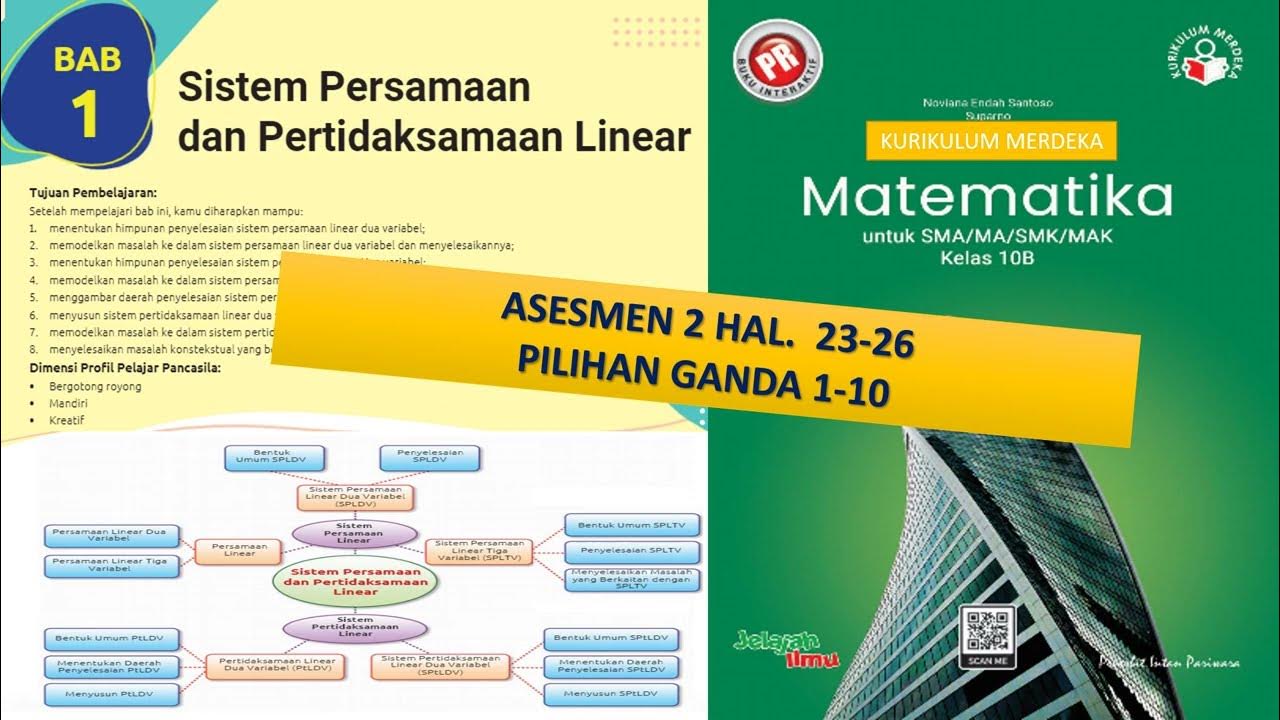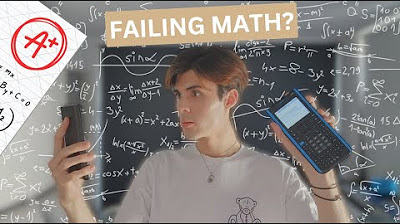TRIK CEPAT PENALARAN UMUM BAGIAN GRAFIK - TPS UTBK 2021
Summary
TLDRIn this educational video, the host discusses various math problems, focusing on graph-related questions, which are often considered challenging. They provide tips and tricks for quickly solving general offer problems without spending too much time. The script includes examples of bar graph data analysis and a problem involving the exchange of points for goods, aiming to make complex topics more approachable and less intimidating for viewers. The host encourages viewers to engage with the content, learn diligently, and not be afraid of math, emphasizing the importance of practice and prayer for success.
Takeaways
- 😀 The video is a tutorial on solving common math problems, specifically focusing on graphs and data interpretation.
- 📈 The speaker introduces a problem involving the production data of paper factories A, B, and C from March to July, and discusses how to interpret the data from a bar graph.
- 📊 The audience is guided through the process of comparing production increases, emphasizing the importance of understanding the relative changes rather than the exact percentages.
- 🔢 A mathematical trick is shared for quickly calculating ratios and percentages to determine which factory had the largest increase in production.
- ✍️ The video provides a step-by-step explanation for a problem involving the exchange of points for two types of goods, with the goal of finding the number of items that can be obtained.
- 🛒 The problem-solving approach includes setting up an equation based on the given points and prices to find the unknown quantity of goods.
- 🚗 A speed and distance problem is presented, where the initial speed and time are given, and the viewers are challenged to find the required speed to reach a destination in a shorter time.
- 🏁 The solution to the speed problem involves using the relationship between speed, time, and distance to calculate the new speed needed to meet the time constraint.
- 📚 The speaker encourages continuous learning and practice, emphasizing that hard work and prayer can overcome fear of math problems.
- 🗣️ The video ends with an invitation for viewers to engage with the content by commenting, asking questions, and sharing their solutions on social media.
- 👋 The closing message includes a reminder to subscribe, like, share, and comment on the channel to support its continued creation of educational content.
Q & A
What is the main topic discussed in the video script?
-The main topic discussed in the video script is the solution to common problems related to 'penalaran' (which seems to be a mistranslation, possibly intended to be 'penjumlahan' meaning 'addition' in Indonesian), specifically focusing on graph-related problems.
What kind of graph data is presented in the script?
-The script presents data related to the production of paper in factories A, B, and C from March to July, shown in the form of bar graph data.
What is the method suggested for solving the graph problems quickly?
-The method suggested for solving the graph problems quickly involves simplifying the calculations by dividing and comparing the fractions to find the largest increase without needing to calculate the exact percentages.
What is the significance of the '10/40' and '10/30' comparison in the script?
-The comparison of '10/40' and '10/30' is used to illustrate a quick method of determining which fraction represents a larger increase by simplifying the fractions and comparing them directly.
How does the script suggest estimating the production for August based on the given data?
-The script suggests estimating the production for August by observing the trends in the data, such as consistent increases or decreases, and making an educated guess based on those patterns.
What is the second problem presented in the script regarding the bar graph?
-The second problem presented is to determine which statement is most accurate for estimating the production in August based on the data from March to July, with a focus on identifying the correct prediction among the given options.
What is the coupon exchange problem discussed in the script?
-The coupon exchange problem involves a scenario where a person exchanges 425 points of shopping coupons for two types of goods, A and B, with specific point values per item, and the task is to find out how many of item B can be obtained.
How many items of type B can be obtained according to the coupon exchange problem?
-According to the script, the person can obtain 5 items of type B by exchanging the 425 points with the given exchange rates for items A and B.
What is the travel time problem presented in the script?
-The travel time problem involves calculating the required speed to reach a destination in 4 hours instead of the initial 9 hours, with the initial speed given as 15 km/h.
What is the solution to the travel time problem in the script?
-The solution to the travel time problem is to determine that the required speed to reach the destination in 4 hours is 27 km/h, by setting up an equation based on the relationship between speed, time, and distance.
What is the call to action for the viewers at the end of the script?
-The call to action for the viewers is to engage with the content by subscribing to the channel, liking, sharing, and commenting on the video, as well as interacting on Instagram for further discussion and clarification.
Outlines

This section is available to paid users only. Please upgrade to access this part.
Upgrade NowMindmap

This section is available to paid users only. Please upgrade to access this part.
Upgrade NowKeywords

This section is available to paid users only. Please upgrade to access this part.
Upgrade NowHighlights

This section is available to paid users only. Please upgrade to access this part.
Upgrade NowTranscripts

This section is available to paid users only. Please upgrade to access this part.
Upgrade NowBrowse More Related Video

कम समय में Maths Revise कैसे करें🔥By Gagan Pratap Sir #ssc #cgl #chsl #strategy

How to Use Socratic by Google

Cahaya dan Alat Optik Kelas 8 SMP (Part-5) Latihan Soal Mata dan Kekuatan Lensa

Pembahasan Buku PR Matematika Kelas XB Intan Pariwara|Asesmen 2 Pilihan Ganda No.1-10|Kurmer

how to study MATH EFFECTIVELY | get STRAIGHT A's in exams

Makna dan Klasifikasi Masalah dalam Matematika
5.0 / 5 (0 votes)